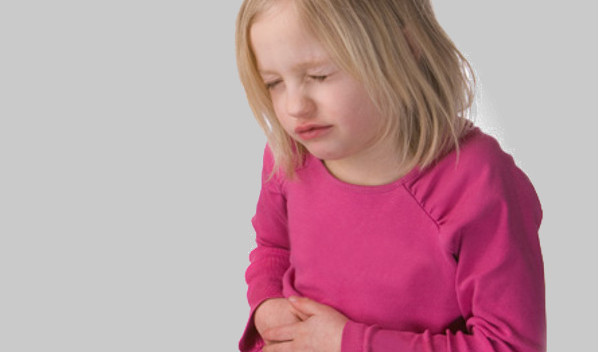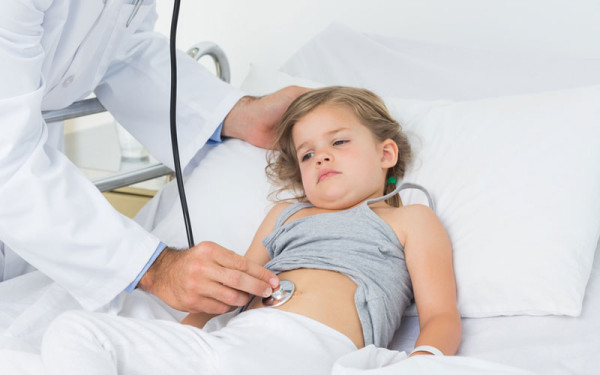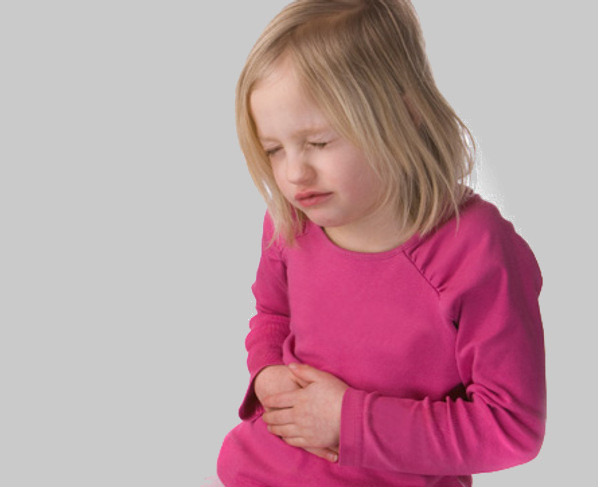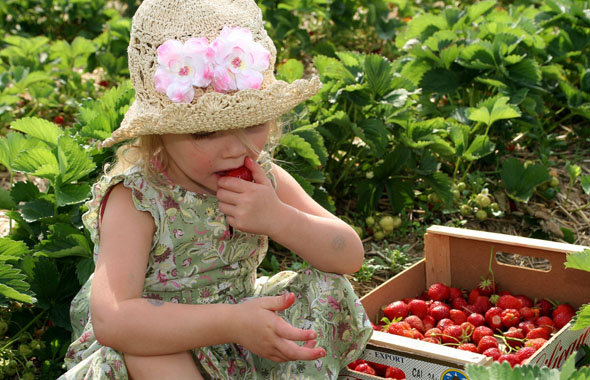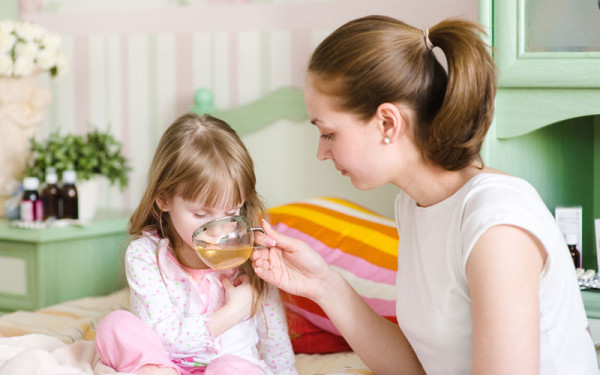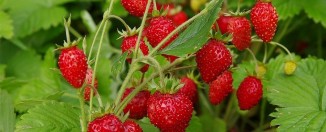Food poisoning in a child - what to do
Food poisoning is a fairly common phenomenon. Often we are simply not careful about hygiene and checking the expiration dates on the packages. It is especially difficult for young children to tolerate this condition, because their fragile body is not yet able to withstand the toxins that cause the disease. How to recognize poisoning in a child? What if the trouble has already happened?
Content
Food Poisoning Symptoms
Food poisoning or toxic infection occurs due to the fact that a person has eaten a product populated with toxins from bacteria and microbes. Unfortunately, the mortality statistics for this reason in our country are disappointing. Quite often, death occurs due to untimely medical care. Parents are unable to assess the situation and correctly diagnose.
Symptoms of poisoning in children almost always appear suddenly within a few hours after eating a spoiled product. In some cases, the child may not feel well until after a few days. The shorter this period, the more dangerous it will be to delay treatment. Intoxication can be mild or severe.
The main signs of poisoning:
- skin rashes and allergic reactions;
- swelling;
- general weakness, malaise;
- loss of appetite;
- unwillingness to eat;
- rumbling, cramps in the abdomen;
- nausea and vomiting - in this way the body signals the ingress of hazardous substances;
- diarrhea (watery stools mixed with blood or mucus should be especially alarming);
- pallor of the skin;
- heart palpitations;
- increased or decreased body temperature.
Temperature in case of poisoning in a child
An increased temperature in a child is a kind of protective reaction to the ingress of toxins into the body. Blood circulation begins to increase, the baby sweats and harmful substances are excreted naturally.
Before knocking down a high temperature, it should be remembered that fever itself is not a disease. The values on the thermometer, of course, need to be monitored, because they show how successful the process of fighting the infection is. Do not panic when you see 37 ° C or 38 ° C and immediately rush to bring down the temperature. But in this situation there are exceptions, for example, if the child has not reached the age of three or there is a danger of developing febrile seizures. Then it is urgent to take action and lower the body temperature of the child by all available means. Be that as it may, the first step is to consult a doctor who will make the correct diagnosis and prescribe an antipyretic agent based on the age and physical condition of the child.
Fever is usually classified into two types. "Red" is a condition characterized by moisture and redness of the skin. If there are no complications in the form of individual intolerance to high temperature, it is knocked down only from the 38 ° C mark. The second type, which is more dangerous, is "white" fever. If the baby's hands and feet become pale and cold and chills, antipyretic should be given immediately.
Here are some effective tips on how to bring down a child's fever at home:
- Applying gauze soaked in mint tea to your forehead, groin, and wrists will prevent the temperature from rising further.
- One of the best "old-fashioned" ways to lower the values on the thermometer - wiping with water and a little vinegar. Every 2-3 hours it is necessary to process the back, abdomen, palms and heels.
- Drinking plenty of fluids will help your body replenish lost fluid and flush out toxins naturally. Drinks should be warm, such as fruit drinks, sweet tea or special teas.
- In no case should the child be wrapped up, this will provoke an even greater increase in temperature.
Vomiting in case of poisoning in a child
Vomiting can occur in conjunction with other signs of intoxication or as an independent symptom. At the very beginning, the child becomes lethargic and inactive, then nausea and repeated episodes of vomiting appear. Already at this stage, you should immediately seek help from to the doctor, because such a condition threatens dehydration of the body and the development of renal failure, since together with pathogenic bacteria, useful substances are washed out - salt and trace elements.
In the absence of temperature, it is necessary to start treating vomiting with gastric lavage and desoldering. It is necessary to restore the water-salt balance at intervals of 20 minutes. It can be a glucose solution, compote, warm tea, or just boiled water. It is very important to remember that you cannot try to induce vomiting on your own, especially for babies. The baby can simply choke on vomit or damage the walls of the esophagus.
In case of poisoning, it is forbidden to give the child solid food during the day, since the gastric mucosa at this moment is irritated and prone to inflammation. Fiber-rich foods such as turnips, radishes, and cabbage should also be avoided. Sausage, bread, eggs, baked goods can increase colic. But as soon as the baby feels better, he needs to be fed with light chicken, vegetable broth or porridge boiled in water. To make the recovery of the body faster, it is allowed to use fermented milk drinks.
As for drug treatment, it would be better for the drugs to be advised directly by the attending physician. But most often they are used for food poisoning:
- "Regidron" - replenishes the fluid lost by the body. It is diluted in a liter of boiled water and consumed throughout the day.
- "Smecta" - will help stop vomiting and diarrhea.
- "Enterofuril" - helps to destroy the infection in the intestines.
Causes of food poisoning
The cause of intoxication in a child is usually the use of infected foods. A reaction can occur if children knowingly eat poisonous berries, mushrooms or other foods. But most often the product with an expired shelf life or one that was stored incorrectly becomes the culprit. You should pay special attention to the purchase:
- Any kind of meat. If stored improperly, pathogens are formed in it, which can cause severe intoxication for both adults and children.
- Eating low-quality, rotten fish entails severe consequences due to the toxic substances formed during the decomposition process.
- Vegetables and fruits require careful cleaning and processing, because bacteria multiply on them very quickly and produce toxins that cause poisoning.
- Mushroom poisoning is often fatal. They tend to accumulate heavy metals, especially if they grow near large chemical plants. In addition, unknowingly, we can collect and cook so-called false mushrooms, which are poisonous.
- Storing fermented milk products outside the refrigerator leads to their deterioration. In this case, the staphylococcus bacterium "attacks" the body most often.
- Canned food and pickles, including homemade ones, can be just as dangerous, because there are a number of bacteria that multiply even in the absence of air. Therefore, carefully look for swollen and rusty lids.
Food poisoning in a child - what to do
If you suspect food poisoning in a child, the first step is to immediately call a doctor who will make the correct diagnosis and prescribe an effective treatment. Sometimes the signs of intoxication are very similar to the symptoms of various infections. Only a specialist is able to recognize this or that ailment and advise to pass the necessary tests. Self-medication in such a situation is very dangerous and fraught with sad consequences.
If a baby has been diagnosed with a toxic infection, then, most likely, you will be offered to do a gastric lavage procedure to remove the remains of the product that caused the problem. It is impossible to perform such manipulations at home, and in a medical institution you will be provided with qualified assistance.
In extreme cases, vomiting is caused independently, after having persuaded the baby to drink 1-2 liters of boiled water.
Poisoning treatment in children
You need to start treatment even before the arrival of the doctor. But since it is not recommended to give any medications without a prescription, use all available and safe means.
- Drink water-salt solutions for the child, for example, "Regidron". The frequency of use in this case depends on the age. Give warm non-carbonated drinks every 20 minutes - tea, rice broth, compote, fruit drink, etc.
- For diarrhea, enterosorbents are most often prescribed, such as "Microsorb", "Polyphepan", "Smecta". And also from birth you can use "Motilium", which eliminates severe vomiting and diarrhea, and "Linex" - it restores the intestinal microflora. When mucus or green blotches appear in the stool, the specialist prescribes antibiotics.
- In the first two days after intoxication, it is very important to observe a gentle diet... Often, but in small portions, you can use grated soups in low-fat broth, mashed potatoes without oil, rice porridge in water, and a baked apple.
Folk remedies for poisoning
There are many folk remedies that can provide first aid for food poisoning, including in children. Whether to take our advice into service or see a doctor is up to you. Some methods are only used to relieve symptoms such as diarrhea, vomiting, or fever. But there are those whose action is aimed precisely at treating the ailment itself - toxicoinfection.
Here are the most popular folk remedies for coping with food poisoning in a child:
- Ginger broth fights the main symptoms of intoxication remarkably. To prepare it, you only need a spoonful of ground ginger and a glass of boiled water. The broth infused for about an hour should be drunk every 30-60 minutes in a teaspoon.
- Cinnamon tea is another well-known method. Pour cinnamon sticks with water and bring to a boil.
- In order to make a decoction of dill and honey, take 400 ml of boiling water, add a spoonful of chopped herbs and a little honey to it.
- Anise broth is prepared from several grains of anise, poured into 300 ml of water, and then the mixture is boiled for 10 minutes. To free the body of toxins after drinking the drug, they induce vomiting.
